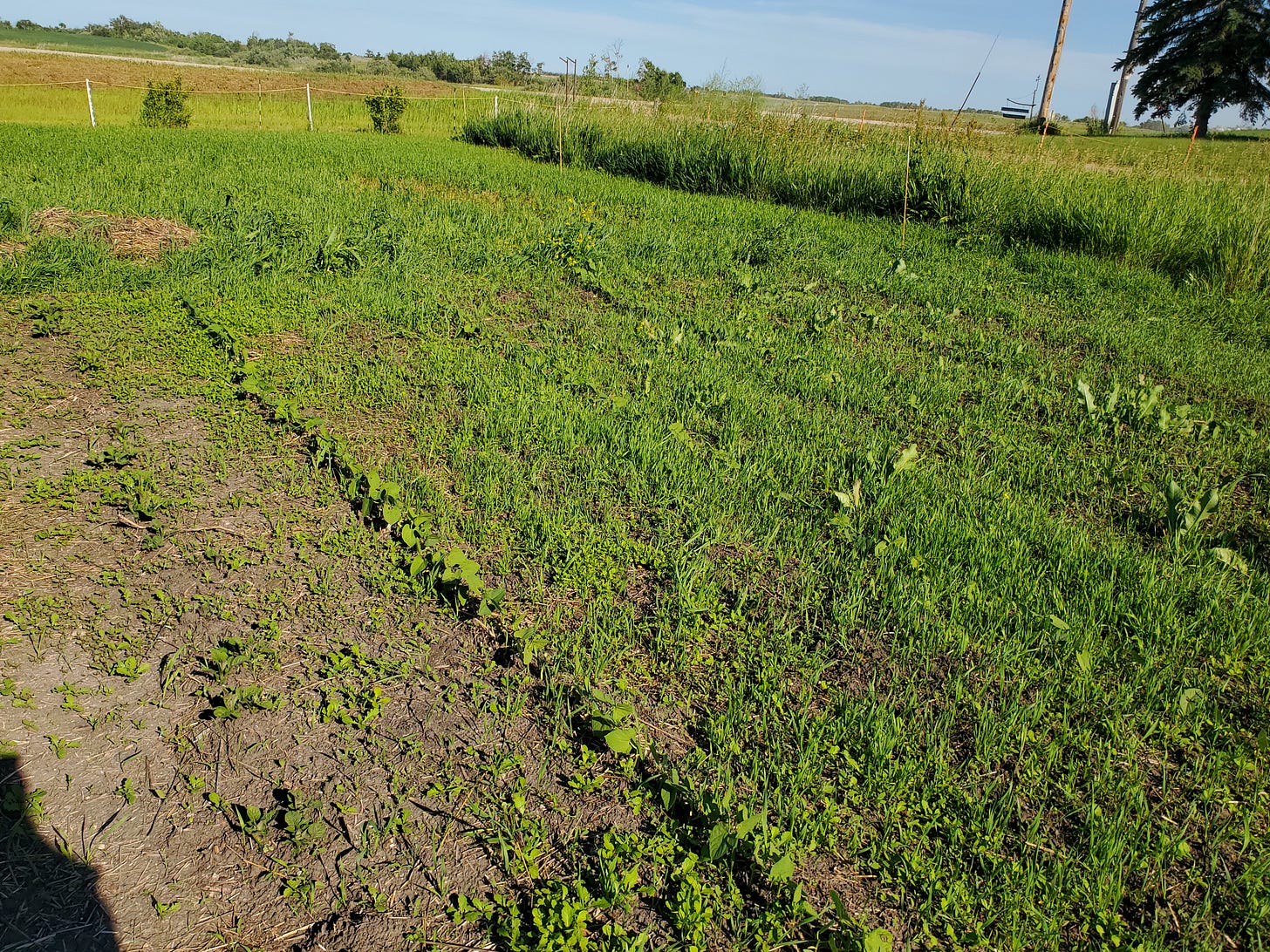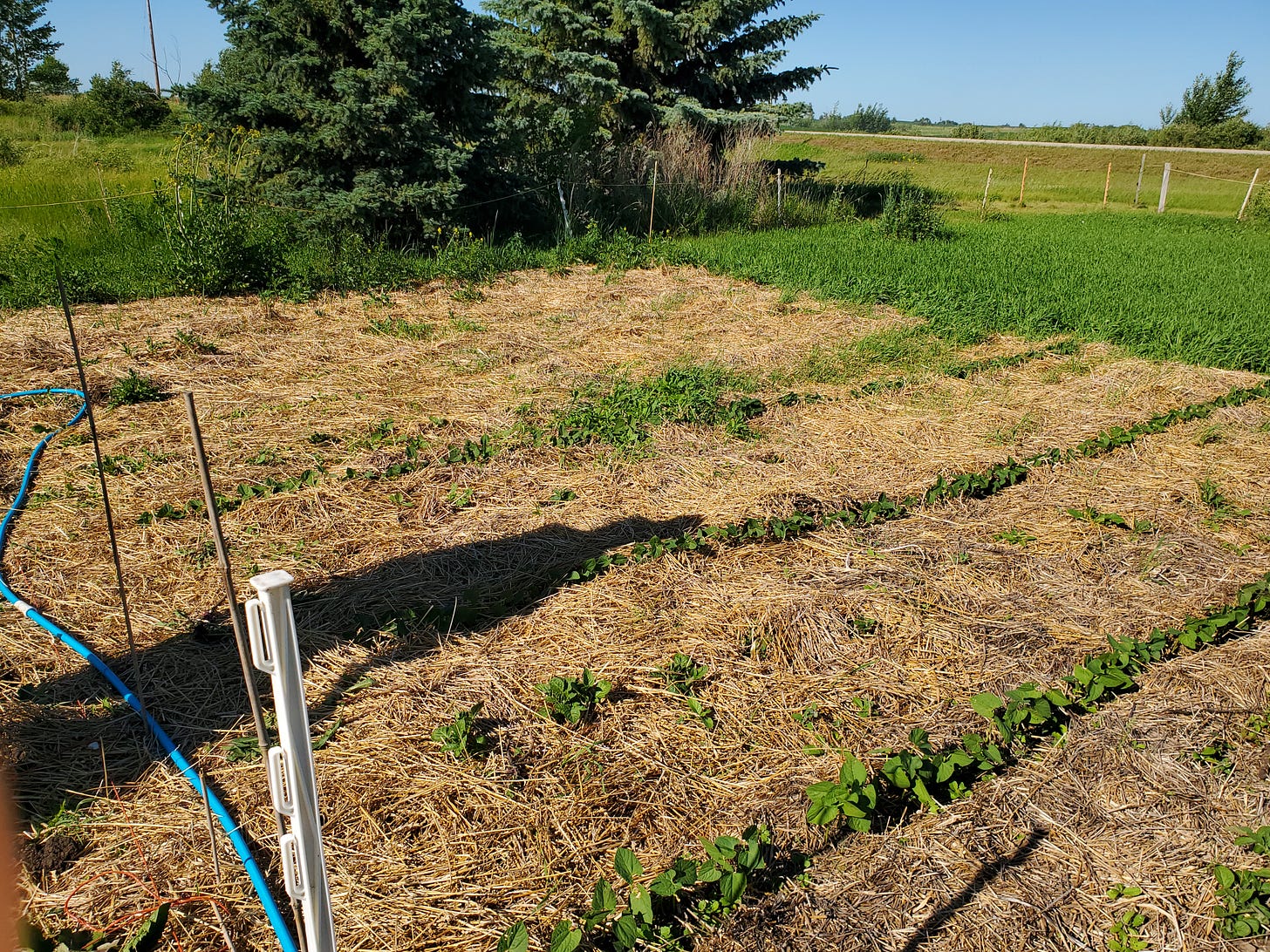A day late on my schedule for posting, but here it is nonetheless. We are finally done planting all the potatoes and beans! This garden still needs loads of fibrous material to break up the soil; clay is hard to work with but has some latent nutrition.
Add to that our attempts of the past six years to get more accessible nutrients with plant material and animal waste from chickens and pigs, the top several inches is a rich dark color now. But as soon as you remove unwanted vegetation, it dries out and turns into a parking lot if no mulch is added.
The compost pile has just not been worked as it should because we haven’t had the time and energy. Perhaps this will be the year we get it set up properly.
Yesterday marked the last potatoes getting planted; some were so dried up we figure we will be lucky to get about half of them to really do anything. Crossing fingers on that one. A good soaking with the sprinkler before we headed off to bed last night should give them some chance to do their thing.
The previous patches of potatoes, beans, onions, carrots and beets are all growing now, albeit full of weeds and that darn brome grass filling right back in again. In this last patch we left a few of the borage that aren’t in the way; they are great for pollinators and are really quite pretty, plus they make awesome mulch and soil remediation when they are done.
Our licorice root, planted in spring of 2019, is a riot spreading through an entire section of garden now. We learned that it is a nitrogen fixer, so we will definitely be splitting roots up to put into our tree and shrub rows this fall.
Today’s task is to cut down that big patch of grass once more, cut in spots for squash and melons, and mulch them. Those will all get planted tomorrow, hopefully; I will get the tomatoes and peppers in the front of the potato patch we planted yesterday.
There is one more patch to work with that we will do some experimental trials with. Instead of digging all the weeds up, we will remove just the few clumps of grass and roots, then chop down the weeds (or pull up the tougher ones). Chop and drop; then dig holes just for the plants that need to go in there, and mulch on top of things to prevent immediate regrowth of the weeds.
Things are coming around, it seems; we’re just hoping for no more major hiccups this year so we can finally get a handle on this garden and do the planning and preparation for a mini-permaculture-food-forest. More on that in future updates.
All of my content is free, but I do offer paid subscriptions for anyone who would like to support my work. If a one-time contribution is more appealing, use the “Tip Jar” below to give any amount you like. If you’re not ready to commit but enjoyed reading this post, you can follow, hit the like button, leave your thoughts in the comments, or restack to spread the word.
To see more stories in this category, go here: Gardening & Permaculture
To see all my categories, go here: Newsletters








